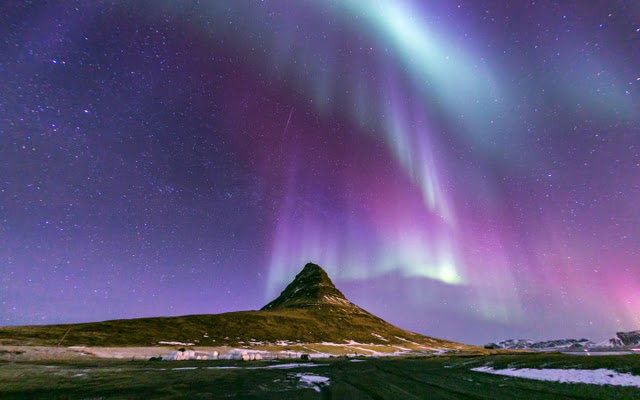Quck answer
Greenland and Iceland have their names swapped, as Greenland is covered in ice and Iceland has a greener landscape. The naming confusion can be attributed to the Vikings, who wanted to attract settlers to Greenland by giving it an appealing name. However, Greenland’s icy conditions are due to its location in the Arctic region, with a continental climate and the presence of the Greenland Ice Sheet. In contrast, Iceland benefits from the warm waters of the Gulf Stream, which moderates its climate and allows for a more hospitable environment, despite its northern location.

Have you ever wondered how things acquire their names? Some names are self-explanatory. It’s easy to understand why we call an eight-legged sea creature an OCTOpus. However, there are other names that seem less logical. One of those names that many people question is Iceland. Why is it called Iceland when the island is actually quite green? On a similar note, what about Greenland? Isn’t most of that country covered in ice?
Some individuals might assume that we simply mixed up the two names. After all, the islands are in close proximity to each other! However, that is not the case. The Vikings were the ones who named both places. Typically, they named things based on what they saw. For example, when Leif Erikson arrived in Canada, the first thing he saw was grapes growing on a vine. Upon seeing the vine, he named the land “Vinland.” So, how did they come up with the names Iceland and Greenland?
In 850 CE, Naddador was the first Viking to land in Iceland. It was snowing when he arrived, so he named the island “Snow Land.” Later, Flóki Vilgerðarson journeyed to the island. During his voyage, he lost his daughter. Shortly after reaching the island, all of his livestock died. Feeling sad and unsure of what to do, the Viking climbed a mountain to ponder. From the summit, he observed a bay filled with icebergs. That was when he decided to rename the island “Iceland.”
The icebergs that Vilgerðarson saw were not common in Iceland. Many people today believe that they likely drifted over from Greenland. Nonetheless, the name “Iceland” stuck. Years later, Iceland became home to numerous Vikings. Erik the Red was one of the inhabitants. After a violent feud, Erik the Red was banished from Iceland. He departed the island and sailed west.
In 985 CE, Erik the Red arrived in the southwest of Greenland, which was one of the few regions not covered in ice. In fact, that area still has thriving farms today. Upon witnessing the abundance of green plant life, Erik the Red named his new home “Greenland.” He also chose the name in the hope that it would attract more people to settle there.
Small settlements did emerge in Greenland. However, the Vikings living there were unaware that they were experiencing the Medieval Warm Period. This was a period of warm climate in the Northern Atlantic that would not last. Around the year 1257 CE, a volcanic eruption in Indonesia triggered a “Little Ice Age.” This event caused temperatures to drop in both Greenland and Iceland.
The change in Greenland was much more drastic compared to Iceland. The island grew colder each year. The Vikings attempted to adapt to the new climate. However, the lower temperatures made food scarce and seafaring dangerous. Eventually, no Vikings remained in Greenland. Most of the island became covered in a layer of ice.
Today, the climate is changing once again. The ice sheet in Greenland is now melting! And, believe it or not, the melting ice in Greenland is causing Iceland to become colder. In fact, experts predict that if this trend continues, the two islands may eventually live up to their names. In a few hundred years, Greenland may be green and Iceland may be icy.
The North Atlantic Ocean is getting colder due to melting ice, which in turn slows down the Gulf Stream. The Gulf Stream is an ocean current that brings warm water from the Gulf of Mexico to Iceland. As a result of the stream’s slowdown, Iceland will no longer receive warm water and will start to cool down.
We are curious about the origins of other countries’ names. Where did the names “America,” “Brazil,” and “Canada” come from? Do these countries have stories behind their names like Greenland and Iceland? What are your thoughts?
Let’s continue exploring Iceland and Greenland together. Find a friend or family member to assist you with the following activities:
1. Many people often confuse Iceland and Greenland. To better understand the two islands, read more about them and write a paragraph comparing and contrasting them. What similarities and differences do you notice? How about the people who inhabit these places?
2. Interested in learning more about the Gulf Stream? Read about it and then explain your knowledge of it to a friend or family member. Try your best to answer any questions they may have.
3. The Vikings originated from Scandinavia but traveled extensively around the world. Take a look at a map of their travels and imagine what it would have been like to journey to one of those places as a Viking. Write a story describing an adventure you could have embarked on.
Sources of curiosity:
– https://news.nationalgeographic.com/2016/06/iceland-greenland-name-swap/ (accessed on March 8, 2019)
– https://scijinks.gov/gulf-stream/ (accessed on March 8, 2019)
– https://www.history.com/news/why-the-vikings-struggled-in-iceland-and-greenland-and-some-didnt-make-it (accessed on March 8, 2019)
– https://www.smithsonianmag.com/history/why-greenland-vikings-vanished-180962119/ (accessed on March 8, 2019)





Leave a Reply